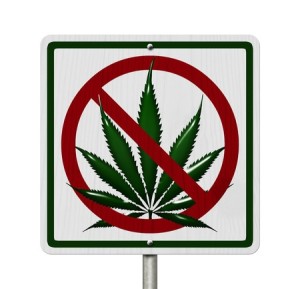The Great Breathalyzer Race

Parallel to the growing approval of medical and recreational marijuana in states across the country, there is a technological race to bring the first marijuana breathalyzer to market. As of the beginning of June 2018, that hasn’t happened yet, but there seem to be two companies in the lead, Cannabix Technologies and Hound Labs. Hound Labs has already field tested its breathalyzer with law enforcement and completed a high-speed track test in June of 2017. Entrepreneur noted Hound Labs was testing their third and potentially final version when the Entrepreneur story was published online on December 28, 2017. The company hopes to have it on the market by the fourth quarter of 2020, at a projected cost between $500 and $1,000 per unit. Watch a YouTube video of the Hound Labs driving test here.
One of the biggest stumbling blocks is the lack of a standardized procedure to determine whether someone in driving under the influence of cannabis and how that translates into driving impairment. “Per se” laws seek to measure what level of marijuana is in a driver’s system. “But the trouble with per se laws is that the levels detected in blood or saliva may not necessarily detect impairment; they simply note THC’s presence in the body.” As RollingStone pointed out online, “the science is complicated.”
Science Direct noted how quickly THC leaves the bloodstream. Research done by Marilyn Huestis, the former chief of chemistry and drug metabolism at NIDA’s Intramural Research Program, found that while an occasional user was impaired for 6 to 8 hours, blood THC concentrations could be zero after 2.5 hours. Her research showed that 30 minutes after a driving test, THC levels in subjects was 74% lower than it was after the driving test and 90% lowers at 1.4 hours. Since it takes on average between 1.4 to 4 hours after a crash or traffic stop to administer a blood test, “If someone is driving impaired, by the time you get their blood sample, you’ve lost 90% or more of the drug. So, we have to change what we do at the roadside.”
Huestis and most researchers don’t support a legal driving limit for cannabis, as there is for blood alcohol concentrations. RollingStone said policy makers have pressed her for a (blood or saliva) content level that clearly identified someone as impaired. But she said: “Now that we have done so much research on chronic, frequent cannabis users, I tell them, there is no one number that will clearly distinguish between impaired and non-impaired people.” She advocates for well-trained officers who can identify the behavioral signs of impairment and the development of minimally invasive biological marker tests performed at the roadside to confirm the presence of a cannabinoid. She said that whenever a company has something to bring to market, scientists will want proof of the device’s efficacy; that there aren’t false positives or false negatives:
Tell me when you can first start detecting it in breath, tell me when you last detect it in breath. What’s the detection window? How are you confirming? We have a lot of questions [but] we’re ready and we’re excited. And if it works I think it’s going to be a great tool.
A breathalyzer designed to detect THC has to be very sensitive. “In breath, researchers found that they could measure THC in picograms (parts per trillion) – that’s 1,000 times smaller than the nanograms measured in fluids.” A raisin weighs about a gram. Cut that up into a trillion pieces, and you have an approximation of the size of these particles. Another factor is vapor characterization and trace vapor detection. Since THC has a lower vapor pressure than ethanol, “That means it’s much more challenging to detect in breath than alcohol.”
Marilyn Huestis and Michael Smith recently published an article in the journal Trends in Molecular Medicine, “Cannabinoid Markers in Biological Fluids and Tissues: Revealing Intake.” Highlights from their article included their observation that analysis of minor blood cannabinoids will become an essential step to identify recent cannabis intake. In order to identify recent cannabis use for driving under the influence and accident investigations, improved behavioral markers of cannabis intake are needed.
Recent controlled cannabinoid administration studies enable the development of models and markers to better identify patterns of intake and exposure. Future challenges include developing behavioral markers of cannabis impairment, bringing to market breathalyzers for cannabinoid detection, and identifying markers of recent cannabis intake in diverse biological matrices. We posit that biological monitoring of cannabinoids and metabolites will improve the characterization of cannabis and synthetic cannabinoid intake history.
Huestis and Smith are the co-owners of a consulting company, Huestis & Smith Toxicology LLC, which is working with Cannabix Technologies. Huestis also sits on the scientific advisory board for Cannabix Technologies. The company recently announced its preparation for expanded field tests of the Beta 3.0 prototype of the Cannabix Marijuana Breathalyzer. See their website for a promotional video of their device.
R&D for marijuana breathalyzers has been in the works for several years. Lifeloc Technologies was developing one in 2014 and hoped to have a prototype by late 2015, but there has been no news on progress since then. Lifeloc’s First Quarter 2018 Report noted the company continues to work on developing a THC breathalyzer. “The ability of our technology to detect very low quantities of THC has been demonstrated in our laboratories, but more work is needed to build a practical, portable device.” Cannabix Technologies was working on their breathalyzer as far back as 2014. Hound Labs is a relative newcomer, as the company was only founded in 2014. But it seems to have forged ahead in the race to bring their breathalyzer to market first as it received an $8.1 million investment from Benchmark Capital.

